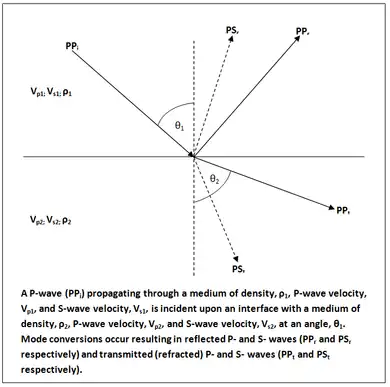
Diagram showing the mode conversions that occur when a P-wave reflects off an interface at non-normal incidence
In geophysics, Knott's equations were the first equations to describe the amplitudes of reflected and refracted waves generated at non-normal incidence upon an interface.[1] They were derived in 1899 by the British geophysicist Cargill Gilston Knott using displacement potential functions[2] and describe the same phenomenon that the Zoeppritz equations describe in terms of amplitude displacements.
References
- ↑ Sheriff, R. E., Geldart, L. P., (1995), 2nd Edition. Exploration Seismology. Cambridge University Press.
- ↑ C. G. Knott (1899) Reflection and Refraction of Elastic Waves with Seismological Applications, Philosophical Magazine 48: 64–97 via Biodiversity Heritage Library
This article is issued from Wikipedia. The text is licensed under Creative Commons - Attribution - Sharealike. Additional terms may apply for the media files.